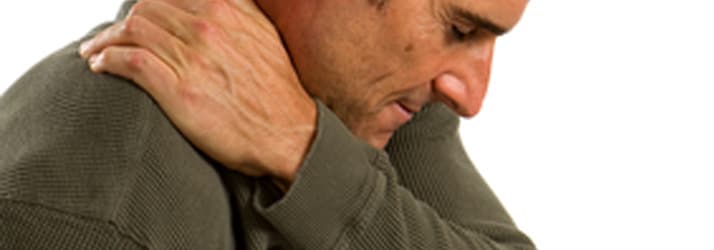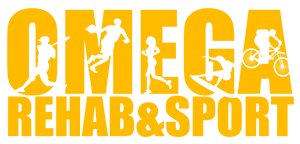Shoulder Pain and the Thoracic Spine in Thousand Oaks CA

The connection between Shoulder Pain and the mid back:
You're probably sitting at a desk right now reading this. Most people in today's workplace environment in do a lot of computer work sitting at a desk. This position causes a number of postural problems in Thousand Oaks CA. One of those problems is forward head position, where the ears move forward of the midpoint of the shoulder.
The problems of desk posture:
Positioning of the head in front of the shoulder increases muscular tension throughout the neck and upper back. It also increased disc pressure as the weight of the head shifts forward. Increased disc pressure makes disc protrusions and herniations more likely. Forward head posture can also lead to increased curvature of the thoracic spine (mid back). Additional consequences include: inwardly turned or rounded shoulders, altered breathing patterns, poor lumbar (low back) positioning, shortened hip flexors and under active gluteal (butt) muscles to name a few. The remainder of this post will focus on the mid back and how it relates to shoulder function and/or pain.
Desk posture, sitting, and the shoulder:
It is very common for individuals working desk job's to experience shoulder pain, loss of motion, or rotator cuff problems despite minimal levels of physical activity. The following overview of body mechanics will discuss just how and why this can happen. The upper arm (humerus) connects to the torso via the scapula/shoulder-blade. They can move independently of one another but in a full overhead position they work together to achieve that position. As the arm is raised overhead as in throwing, lifting, or reaching, several things should happen in shoulder and the spine. As the arm is raised the scapula should move towards the spine and tilt down towards the ribs. There are several reasons this may not happen efficiently such as: arthritic changes in the shoulder joint, soft tissue changes in the shoulder capsule, and muscular imbalances and/or tension of some or all of the muscles of the shoulder complex.
A thoracic spine that is too stiff or excessively curved prevents the shoulder blade from getting into proper position as the arm is raised overhead. As the arm raises and the shoulder blade moves the thoracic spine extends (straightens). If the mid back is too stiff to allow proper positioning several things may happen. One, full overhead position may not be possible, which could limit what tasks patients can perform safely. Second, compensations are likely at the shoulder (glenohumeral joint), which can damage the supraspinatus (rotator cuff) tendon. When this happens repeatedly, the tendon can become inflamed, frayed, or even tear. This is the process that sends most people to a surgeon to have their "rotator cuff" repaired. Thirdly, to get the arm in an overhead position the patient often hyperextends the lumbar spine (compensation) which is a common cause of lower back problems. This is a case of robbing Peter to pay Paul.
Fixing the problem in Thousand Oaks CA:
So, what then is the solution to identify these problems preventatively or to fix them once they're occurring? Regular checks of the spine and extremity joints will reveal any deficiencies or potential problems. Treatment for such problems can include adjustments, soft tissue work, and stretching/strengthening. Specific stretches and exercises are the focus of the rehabilitative phase as thoracic mobility improves. Improving posture and biomechanics are the best way to prevent reoccurrences once pain has been reduced and function improved. The improved movement and strength gained in the program is then put to use in daily life. Lastly, each patient takes what he or she has learned and continues a daily spinal self-care program, which is what we recommend. Self-care programs are generally guided by the treating chiropractor to ensure strength and mobility are maintained and recurrences minimized.
OFFICE HOURS
Monday
8:00am - 6:00pm
Tuesday
7:30am - 6:00pm
Wednesday
8:00am - 6:00pm
Thursday
7:30am - 6:00pm
Friday
8:00am - 6:00pm
Saturday
7:30am - 12:00pm
Sunday
Closed
Omega Rehab & Sport
325 Rolling Oaks Drive #250
Thousand Oaks, CA 91361





